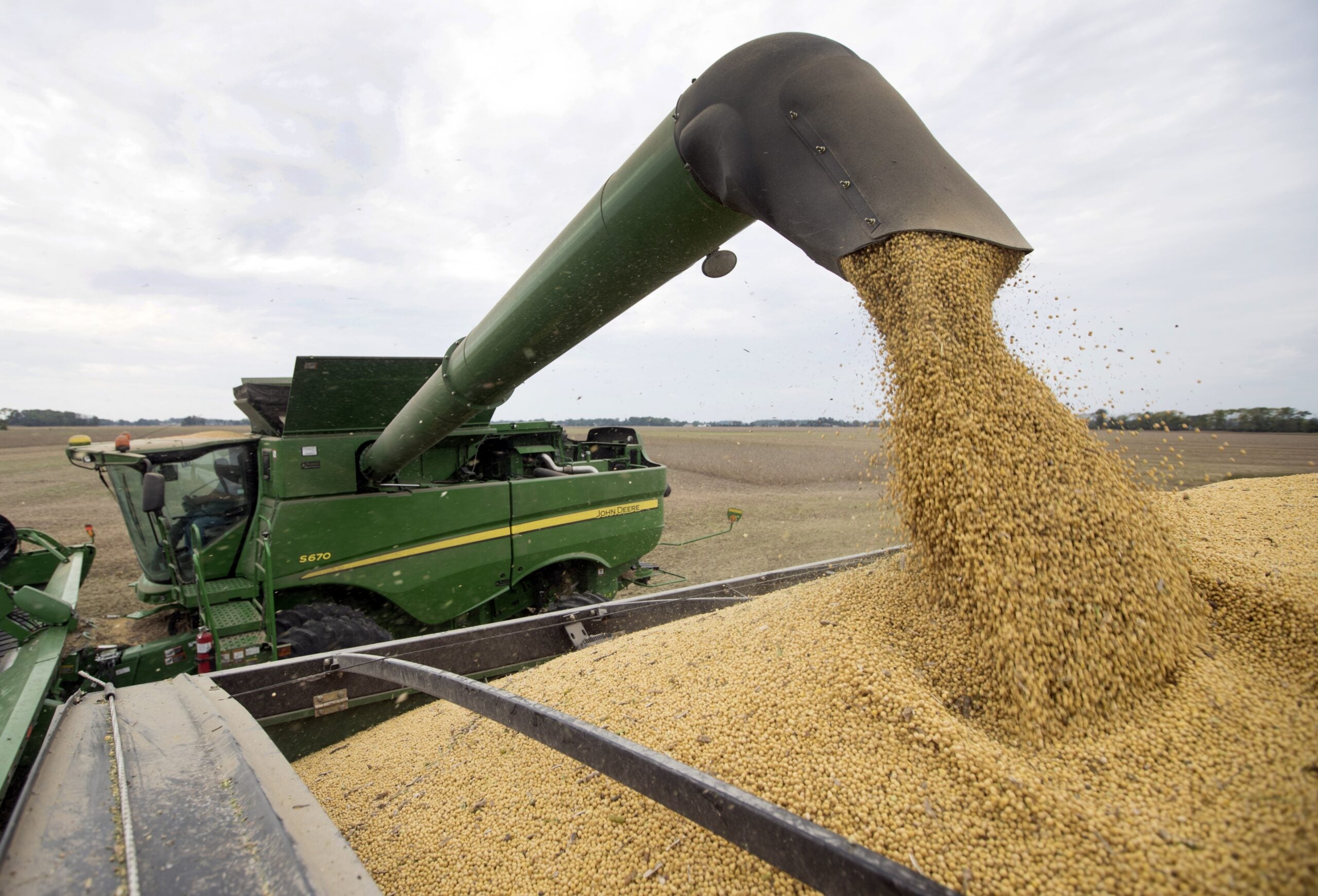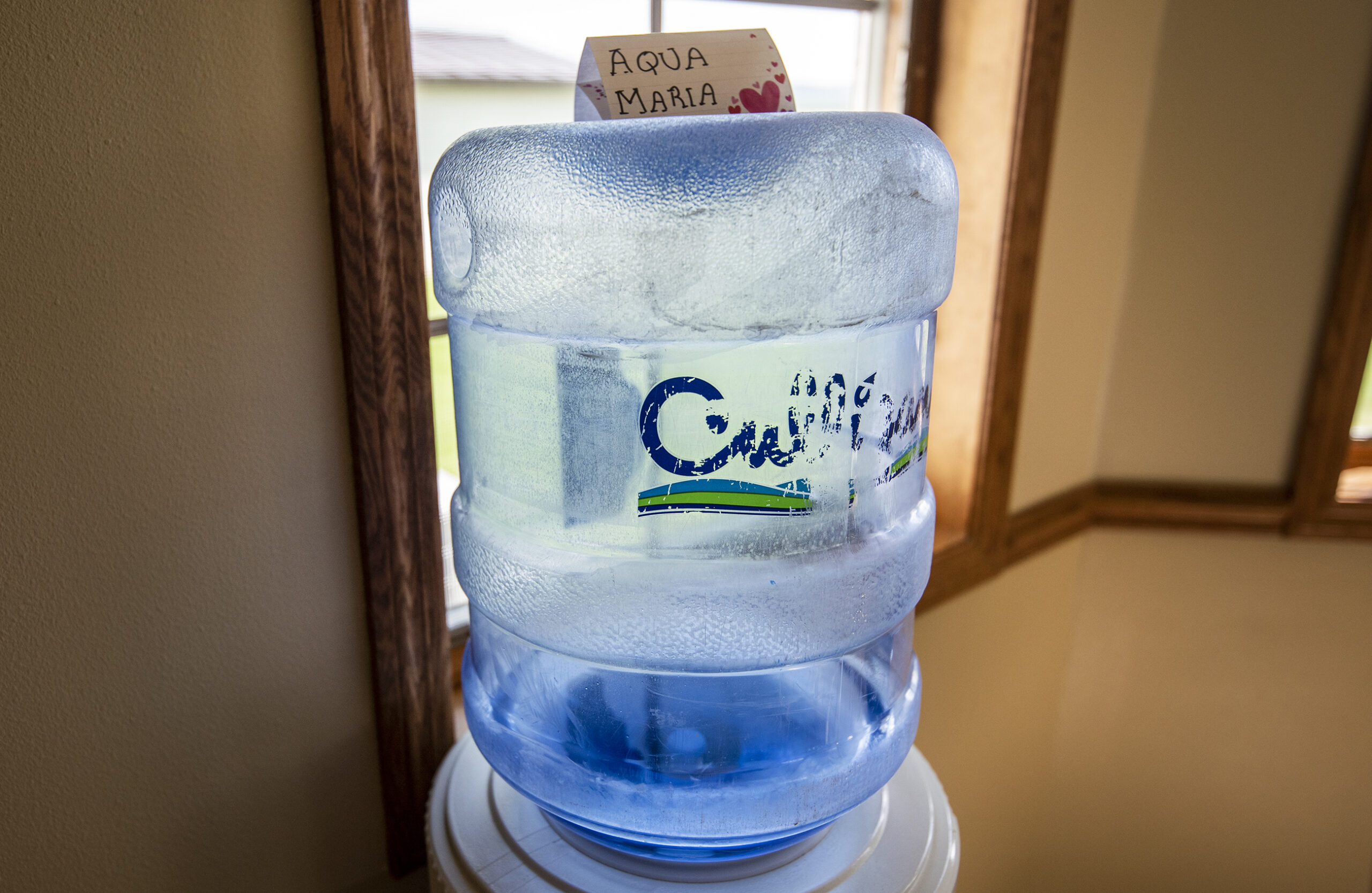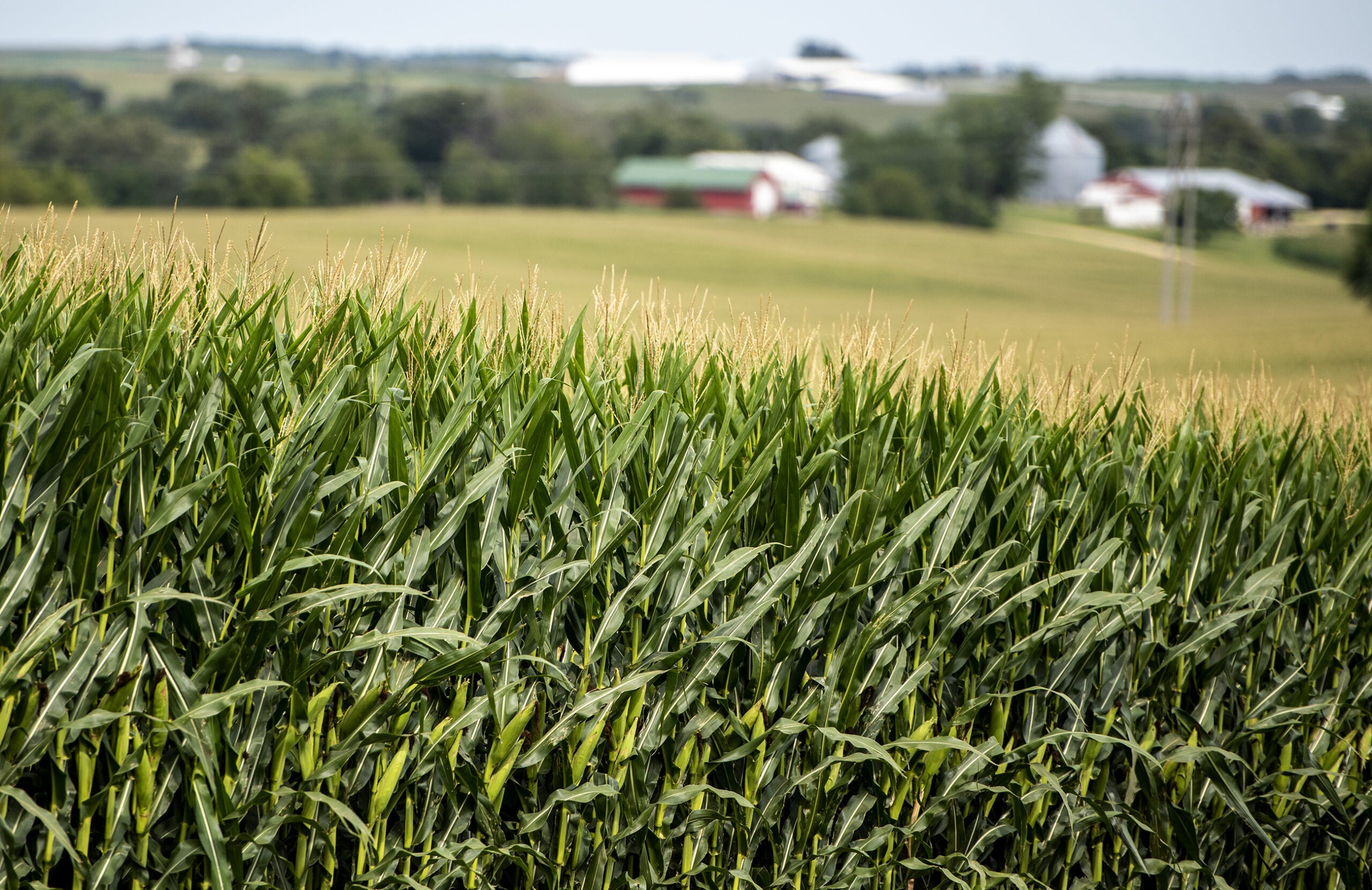Could a soybean-based foam help extinguish fires and prevent toxic chemicals from seeping into Wisconsin waterways?
The Wisconsin Soybean Marketing Board certainly hopes so.
The board’s president, Pat Mullolly, recently visited Dalton, Georgia, to observe farmers and volunteer firefighters using a new soybean-based product called SoyFoam.
Stay informed on the latest news
Sign up for WPR’s email newsletter.
“It looked like the consistency of paint. It was a brown-type substance, maybe a little bit thicker than salt. They inject that into the water stream and it creates foam,” Mullolly said on WPR’s “The Morning Show.”
According to Mullolly, the biodegradable foam could eliminate the use of chemicals known as PFAS in firefighting foam. The chemicals have been linked by the U.S. Fire Administration to health risks and groundwater pollution.
“From what I’ve been told by those firefighters, SoyFoam performs just as well and doesn’t have the risk to the firefighters (or) risk to the environment,” Mullolly said.
Efforts to develop SoyFoam started in October 2022. Since then, Cross Plains Solutions in Dalton, Georgia, has worked with the United Soybean Board to create and produce firefighting foam for the mass market, Mullolly said.
The Wisconsin marketing board is contributing $125,000 to the research and development project, with some work being done at the Chippewa Valley Technical College in Eau Claire. The board receives funding from soybean sales and directs that money, through its Checkoff Program, to research that aims to support soybean farmers, Mullolly said.
“For every bushel of soybeans that is sold in the state of Wisconsin, half of 1 percent of that value is taken out,” Mullolly said. “Checkoff dollars are pulled out from that farmer’s check that he receives for those beans. Half of those funds stay in Wisconsin. The other half goes to the United Soybean Board, which is national.”
Although SoyFoam is early in development, Mullolly is hopeful the product as well as other ongoing state projects can grow Wisconsin’s agricultural economy.
“We’re investing in a project where we hire people to go out into tech schools to teach younger diesel mechanic students the benefits of biodiesel. We’ve invested in some projects at the Port of Milwaukee,” he said.
Economic opportunities for soybean farmers across the United States are growing, Mullolly added.
“There’s some soy oil in Goodyear tires, Skechers shoes. Dalton, Georgia, is the world headquarters for Astroturf, and they’re using soy oil in their polyurethane,” he said.
A Minnesota-based company called CHS is proposing to build a $700 million soybean processing facility in Evansville in Rock County, Mullolly said. According to the U.S. Department of Agriculture, Rock County led the state in soybean production last year by producing more than 5 million bushels.
The Rock County Board of Supervisors is expected to vote on the proposal in June and construction could begin this year, Mullolly said.
Wisconsin Public Radio, © Copyright 2024, Board of Regents of the University of Wisconsin System and Wisconsin Educational Communications Board.






